Cahircalla House
Houses within 5km of this house
Displaying 22 houses.
Houses within 5km of Cahircalla House
Displaying 22 houses.
| House name | Description | |
|---|---|---|
| Claremount House | Claremount house and demesne were part of the Barntick estate. Occupied by Jonas Studdert in 1814 and by Wyndham F. Patterson at the time of Griffith's Valuation. His lease expired on 25 Mar 1857. It was then leased to the Lynch family. One descendant was Patrick Lynch, Senator of the Irish Free State and Attorney General of Ireland 1936-1940. | |
| Barntick | A 3 storey house dating back to the 17th century, it was originally a Hickman home. The Hickmans sold the property to the Peacockes in the mid 18th century. In 1786 Wilson refers to it as the seat of Mr. Peacocke. Occupied by Daniel Powel in 1814 the house was later owned by the Roche family of Limerick and leased to the Lyons, who eventually bought the property. Now owned by the Murphy family through marriage with a member of the Lyons family. |
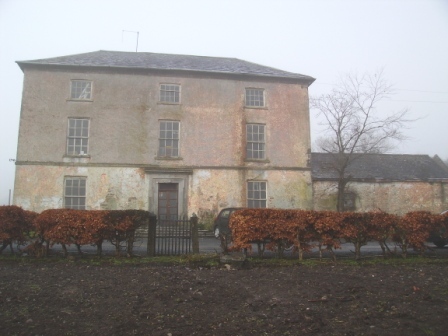
|
| Buncraggy | A home of the Burton family in the 18th century though Wilson refers to it as the seat of Mr. Armstrong in 1786. It was held by James O'Gorman from the Marquess of Conyngham at the time of Griffith's Valuation. The house remained in the possession of the O'Gorman family until the end of the 19th century when it became the property of the Caher family. The house is still occupied and the yard buildings are the centre of a farming enterprise. |

|
| Carnelly | An 18th century three-storey Georgian house, probably designed by Francis Bindon (1690-1765), home of the Stamer family in the 18th century and for much of the 19th century. In 1786 Wilson refer to it as the seat of William Stamer. It passed through marriage to Francis N. Burton of Carrigaholt and then to the O'Grady family. Carnelly House was let from 1840-1849 to John O’Brien of the Ballynalacken family, Member of Parliament for Limerick. His fifth son ‘Peter the Packer’, the notorious crown prosecutor, was born there in 1842. Peter O’Brien was appointed Attorney General in 1888, received a knighthood in 1891 and was created Baron Kilfenora in 1900. After 1922 distinguished historian Mr Justice Gleeson came to live at Carnelly and the Gleeson family are still resident. It was offered for sale in 2013. |

|
| Eden Vale | William Stacpoole moved from Annagh to Eden Vale in 1776 and this house continued to be the main Stacpoole residence until it was sold to the Clare Board of Health in the 1920s. In 1786 Wilson refers to it as the seat of William Stacpoole. At the time of Griffith's Valuation it was occupied by Richard J. Stacpoole and valued at £50. The house was a tuberculosis sanatorium in the 1940s. It is still extant. |

|
| Newhall | The original house was bought from the O'Briens by Charles MacDonnell in 1764 who greatly extended the property building on a new front, probably designed by Francis Bindon. Occupied by Robert and Florence Vere O'Brien in the 1890s though Slater notes it as a seat of Charles R.A. MacDonnell in 1894. A home of the Joyce family of county Galway in the 20th century. It is still extant and in 2013, was offered for sale. |
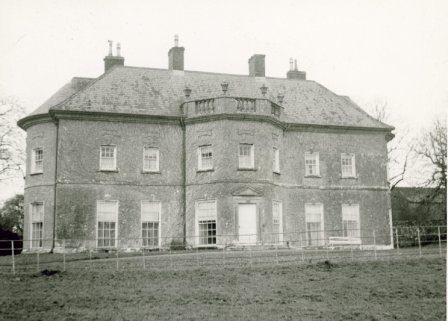
|
| Woodstock House | A 19th century house beside the golf course at Ennis, this house belonged to the Cullinan family at the time of Griffith's Valuation. A house and leisure centre have been constructed on the demesne lands. | |
| Bushypark | A house located to the west of the town of Ennis which belonged to the Macnamaras of Ennistymon for most of the 18th and 19th centuries. Occupied by David Power in 1814. The house and 68 acres were leased to Thomas Cullinan in the 1850s. Buildings at Bushypark were valued at £18 where William J. MacNamara held 68 acres of untenanted land. The house is still occupied. | |
| Shanvogh | Weir describes this house as 18th century. It was occupied by Timothy Cullinan at the time of Griffith's Valuation. He held it from the Marquess of Conyngham and it was valued at £12. The house is still extant. | |
| Beech Park | An early 19th century house, the home of Marcus Keane and his family in the 19th century. Griffith's Valuation shows that he held the property from the representatives of Michael Finucane and it was valued at £20. The house was still in the possession of Marcus Keane in 1906. The house is no longer extant. | |
| Hermitage | Another Keane residence near the town of Ennis, occupied by Francis Keane who held it from Marcus Keane at the time of Griffith's Valuation. In July 1857 Jonathon Gregg advertised the sale of the head rent of Hermitage and the surrounding 13 acres. Hermitage was advertised for sale again in October 1860 with 75 acres of town parks the estate of Christopher Plunkett, Dorothea Tottenham was the tenant. The sale rental records Francis Nathaniel Keane as the tenant. Hermitage was sold in the 20th century by the Keanes and was the property of John and Dorothy Madden in the 1980s. | |
| Ashline Park | Robert Mahon son of Charles of Corbally and his wife Rebecca Crowe lived here in the mid 19th century. Griffith's Valuation shows the house valued at £18 and that it was held from the representatives of Michael Finucane. In the 20th century the house was the residence of the Catholic Bishop of Killaloe for some time. Weir writes that it was demolished circa 1968. | |
| Abbeyfield | A house in the town of Ennis, named Abbeyfield on the first Ordnance Survey map and Abbeyville by Samuel Lewis. In 1786 Wilson mentions that Lord Chief Justice Paterson had a residence in Ennis town. By the early 19th century it was being leased to Thomas Crowe. At the time of Griffith's Valuation the house was valued at £44 and was occupied by Wainwright Crowe who held it from Marcus Patterson. In the late 20th century it was used as a Garda station. |
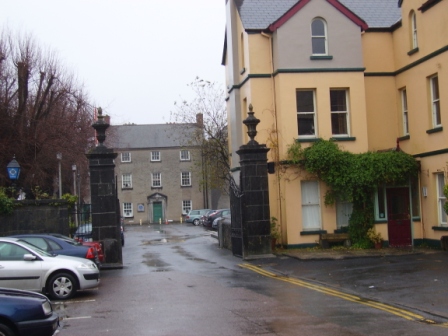
|
| Stamer Park | A home of the Stamer family in the 18th century which was occupied by Daniel Finucane, Secretary to the Clare Grand Jury, by the beginning of the 19th century. Daniel's son Michael was resident in 1837. By 1860 Captain William Stacpoole who was elected Member of Parliament for Ennis was living in the house. The house is still extant. |
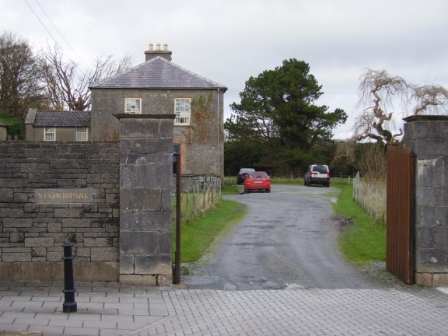
|
| Clonroad | A 17th century house in the possession of the Gore family from 1712 until 1852. The house was close to the River Fergus and had a brewery beside it. At the time of Griffith's Valuation the Gores were leasing the house and brewery to William Digges and the house was occupied by Henry Greene. In the 20th century the house which was rebuilt and extended in the mid 19th century belonged to the Knox and Merry families. | |
| Lifford House | Weir writes that in 1722 Francis Gore leased Lifford to Richard England. Patrick England was High Sheriff of the county in 1749. In 1786 Wilson refers to Lifford as the seat of Mr. England. By the early 19th century the Right Honourable Matthias Finucane was resident at Lifford House. Honoria Slattery, the common law wife, of Andrew Finucane, son of Matthias, occupied the house at the time of Griffith's Valuation. It was valued at £20 and was held from Sir Richard England. Weir writes that the house was demolished in 1965. | |
| Cragleagh | A Mahon house at the end of the 18th century, occupied by Thomas Pilkington in 1814 and by William Kenny at the time of Griffith's Valuation. Kenny held the property from Charles James/Janns and it was valued at £20. | |
| Brookville | Occupied by Charles Janns in 1814, by J. Mahon in 1837 and by Luke Brady who held the property from Anne and Eliza Griffin at the time of Griffith's Valuation when it was valued at £16. | |
| Newpark | This house was built in the mid 18th century by the Hickman family. By 1814 it was been leased to the Mahon family who included James Patrick 'The O'Gorman Mahon', associate of Daniel O'Connell. Occupied by William Mahon who held it from Thomas Persse in the mid 19th century. Purchased by the Barron family in the early 20th century. The house now provides guest accommodation. see http://www.newparkhouse.com/newpage1.htm |
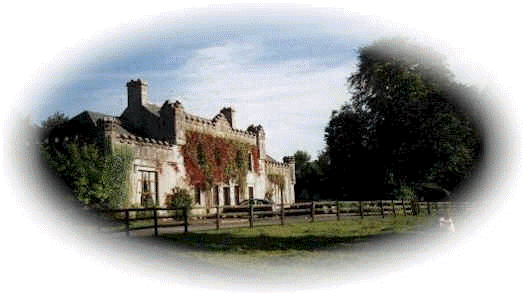
|
| Rosslevan | This house, close to the town of Ennis, was the residence of Francis Swyny in 1814. Rosslevan was occupied by Michael Kerin at the time of Griffith's Valuation. He held the property from the Reverend James Rynd. Rosslevan would appear to have been the home of the Davis family for some time in the 19th century. Members of the Davis family emigrated to Australia and called their new home Rosslevan. The sale rental of January 1875 records that the house had been "improved lately" and had eight bedrooms and three sitting rooms. Weir writes that Edward O'Brien, third son of the 14th Baron Inchiquin lived in the house before it was burnt in 1922. It is now a ruin. |
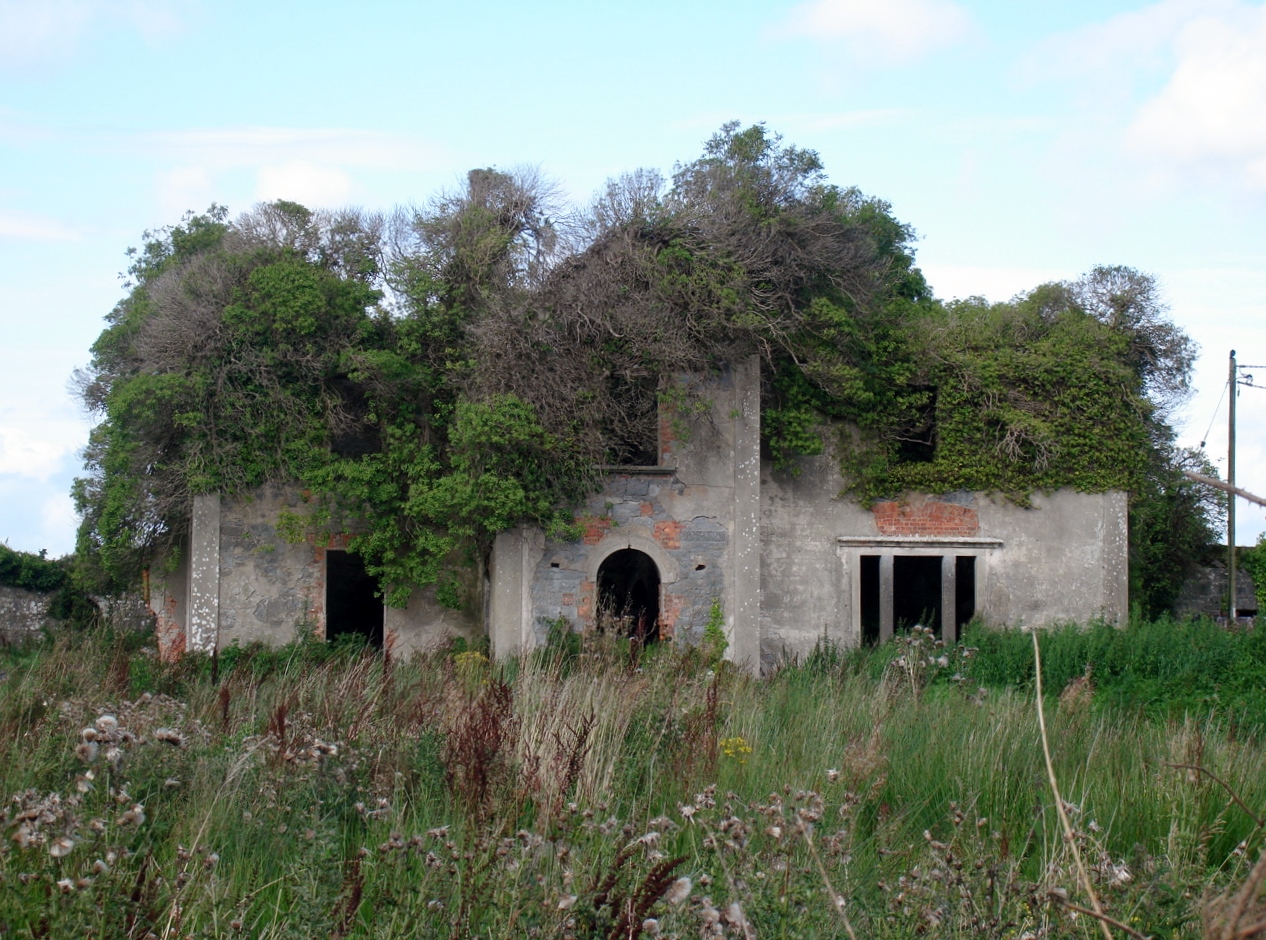
|
| Harmony House | The residence of Patrick Maxwell Cullinan on the River Fergus in Ennis in the 1870s. Local sources indicate he afterwards moved to Cragleigh House. | |
| Cappahard House | In 1786, Wilson refers to Cappaghard as the seat of Mr. Lukey. Two houses are shown in this townland at the time of the 1st Ordnance Survey, Cappahard House and Edenview House. By the 1890s the 25-inch map shows that Edenview has become known as Cappahard House and the original house has gone. This townland was the property of Thomas Persse at the time of Griffith's Valuation and included a herd's house valued at £4. In 1901 it was occupied by the Glynn family. |

